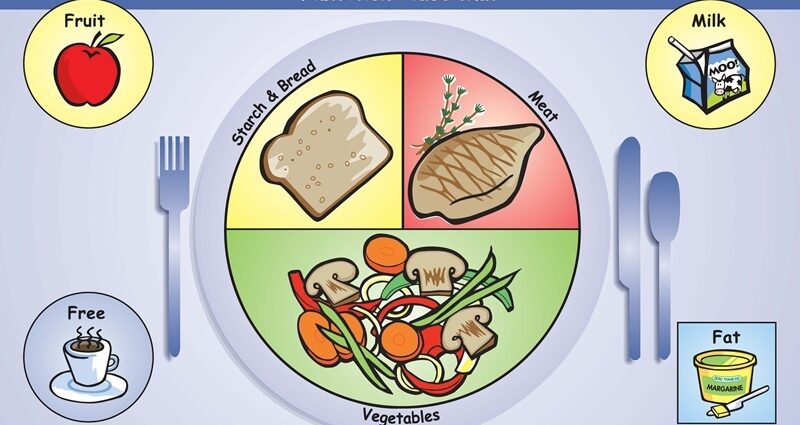Contents
Diet table 9: principles and features of nutritional therapy for diabetes. How Diet 9 May Ease Symptoms
Diet 9 is a therapeutic food for mild to moderate diabetes mellitus. The diet is prescribed by a doctor and is necessary for diabetic patients to normalize and correct metabolism. The basic principles of the table 9 diet for type 2 diabetes are to maintain a balance of carbohydrate and fat metabolism.
Diet 9 is formulated so that the chemical composition of the food is sufficiently balanced, does not cause an increase in blood sugar levels, and contains all the nutrients for normal functioning.
Principles of the “Table number 9” diet
Diet 9, also known as Table 9, is about reducing the calorie intake of the diet by significantly reducing digestible carbohydrates. You can choose healthy foods yourself, using a special table of the glycemic index.
Foods with a high index should be excluded from the diet, and vice versa – you should make up your daily diet mainly from foods with low GIs. The main principles of the “Table number 9” diet:
eat small portions;
take food 5-6 times a day, that is, every 2,5-3 hours;
strictly exclude all smoked, fried, salty and spicy;
completely exclude canned food, mustard and alcoholic beverages.
Replace sugar with safe sweeteners;
limit the intake of carbohydrates and fats, but proteins must correspond to the daily physiological norm;
dishes should be either baked, boiled, or stewed.
Diet 9 is formulated in such a way that the chemical composition of the food is sufficiently balanced and contains all the nutrients for normal functioning. Diet menu 9 should include foods with a high content of ascorbic acid and B vitamins. This can be bran or rose hips. Also, according to the diet, it is recommended to include fresh apples, berries, vegetables and herbs in the menu. To improve liver function, diet 9 includes foods rich in lipotropic substances, that is, those that help burn fat. For example, products such as cottage cheese, oatmeal, cheese, lean fish. To improve fat metabolism, the diet should contain a proportion of vegetable fats, that is, fresh vegetable salads are best seasoned with olive oil.
As an example, a possible menu “Diet No. 9” for patients suffering from diabetes mellitus of the second degree, that is, non-insulin-dependent, is presented.
The first day:
first breakfast: low-fat cottage cheese – 200g with berries – 40g;
second breakfast: one glass of kefir;
lunch: vegetable soup – 150ml, baked lamb – 150g, stewed vegetables – 100g;
afternoon snack: salad of cabbage and cucumber, seasoned with olive oil – 100g;
dinner: grilled dorado fish – 200g, steamed vegetables – 100g.
Second day:
first breakfast: buckwheat porridge with milk 150g;
second breakfast: two green apples;
lunch: borscht (without meat) – 150ml, boiled beef – 150g, dried fruit compote without sugar;
afternoon snack: rosehip broth – 150ml;
dinner: boiled fish – 200g, fresh vegetables – 150g.
Day Three:
first breakfast: cottage cheese casserole – 150g,
second breakfast: broth of rose hips – 200 ml;
lunch: cabbage soup (without meat) – 150ml, fish cakes – 150g, fresh vegetables – 100g;
afternoon snack: boiled egg;
dinner: steamed meat cutlets – 200g, stewed cabbage – 150g.
Day four:
first breakfast: an omelet of two eggs with vegetables 150g;
second breakfast: drinking yogurt 150ml;
lunch: broccoli cream soup – 150ml, stuffed pepper -200g;
afternoon snack: carrot casserole with cottage cheese -200g;
dinner: chicken kebab – 200g, grilled vegetables – 150g.
Day five:
first breakfast: millet porridge 150g, apple;
second breakfast: 2 oranges;
lunch: fish soup 200ml, meat goulash -100g, pearl barley porridge -100g;
afternoon snack: a glass of kefir, bran – 100g;
dinner: meat cutlets – 150g, buckwheat porridge -100g, baked asparagus -70g.
Day Six:
first breakfast: bran 150g, apple;
second breakfast: soft-boiled egg;
lunch: vegetable stew with pieces of meat (beef or lamb) – 200g;
afternoon snack: salad of tomatoes and celery stalks – 150g;
dinner: stewed lamb with vegetables – 250g.
Day Seven:
first breakfast: fat-free cottage cheese 100g with yogurt 50g;
second breakfast: grilled chicken breast 100g;
lunch: vegetable soup – 150ml, meat goulash – 100g, salad of celery and apple stalks – 100g;
afternoon snack: berries – 125g;
dinner: boiled shrimp – 200g, steamed green beans – 100g.
Diet 9: Advantages and Disadvantages
The advantage of diet number 9 is a balanced diet that includes all the nutrients the body needs. The fact is that the amount of carbohydrates and fats is reduced, but not so radically, so the diet can be used for a fairly long time. For overweight people, doctors recommend a lifelong diet. For many, diet 9 may seem inconvenient and difficult, due to the fact that most of the dishes must be prepared, then the required amount of food must be counted and measured. But these disadvantages are compensated by the ability to safely and gradually lose weight, keep weight steadily, and control blood sugar levels.
More news in our .










